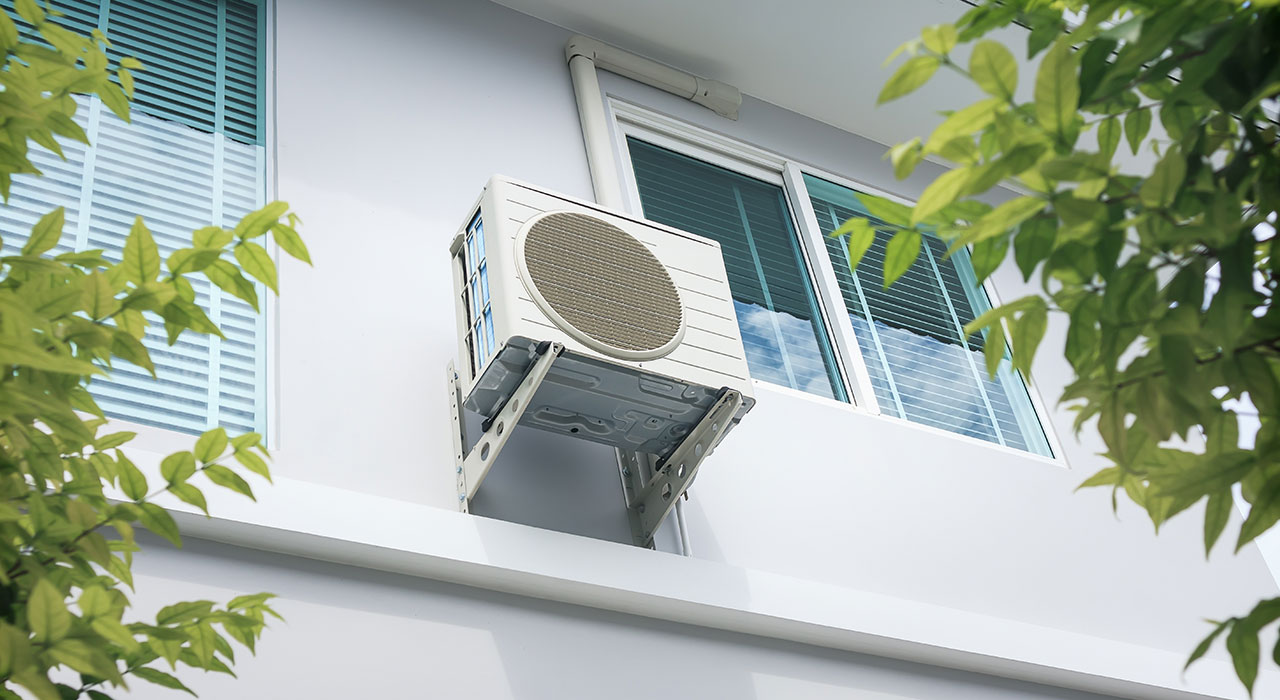
There are those who find in noise a rhythm for dancing (Wesley D’Amico)
Heating or air conditioning systems
The oil and gas crisis of recent months has prompted many people to want to replace their oil or gas heating systems with heat pumps. Likewise, the scorching heat of this exceptional summer has once again brought the subject of air conditioning systems into the limelight. Be careful when planning, because these installations can become a bone of contention among neighbours when it comes to noise!
It is common knowledge that the installation of an air conditioning or heating system requires a building application (or notification). Among other things, a noise assessment must be carried out to prove that the limit values of the Noise Abatement Ordinance are met, and that all possible and economically viable measures have been taken to reduce noise emissions.
Let us see how.
Regulations and preventive measures
First of all, it must be said that the Federal Law on the Protection of the Environment stipulates that people, flora and fauna and ecosystems must be protected by means of preventive measures. That is, in a first step, everything must be done to ensure that nuisance emissions are reduced at source: this is called the prevention principle. The second step is to protect people from harmful immissions. This applies to air pollutants, noise, vibrations, and radiation.
The difference between emissions and immissions can be illustrated using the example of noise: noise emissions are those generated by a source, e.g. a plant, and are the noise perceived at the source. Noise immissions, on the other hand, are the noise e.g. from a street together with noise from other sources and background noise perceived with open windows.
When it comes to heating or air conditioning systems, there are several options that can be implemented to comply with the principle of prevention: installing the system inside a building (in the basement or a technical room), for example, is an excellent construction measure to reduce noise at source. If this is not possible, quieter systems can be chosen or sound-absorbing enclosures can be installed on the external units of air conditioners, for example. There are also measures for operation: for example, switching off the systems during certain hours of the day by setting a timer or taking advantage of the night mode, in which the system operates with reduced emissions. The location where a system is installed outside the house can also be decisive in reducing perceived immissions in the surroundings and consequently friction with neighbours.
In any case, the issue must be seriously investigated, even if an initial assessment shows that noise immissions comply with the limit values defined in the Noise Abatement Ordinance. This is because the Swiss Noise Regulation, still confirmed by the most recent case law, stipulates that emissions must be limited to the maximum extent permitted by technical progress, operating conditions, and economic possibilities, irrespective of the existing noise load. If it is therefore possible to further significantly reduce noise emissions at source with a measure that is both technically and financially feasible, then the measure must be implemented, even if the limit values are complied with. In the evaluation, the technical feasibility and the “decibels” saved must be compared with the costs of the measure, which must always be proportional.
In conclusion
Do not get caught up in the rush and do not underestimate the issue of noise, because giving proper attention before the installation of a system means less friction and conflicts with neighbours afterwards.
Also, from a financial point of view, taking the appropriate measures before construction is much more advantageous than having to make expensive changes later on or having to move an installation.
Written by
Katharina Schuhmacher
Dipl. sc. amb. ETHZ – Owner of eambiente
Via Cà del Caccia, 2 – 6943 Vezia
+41 (0) 91 797 41 20 – www.eambiente.ch


